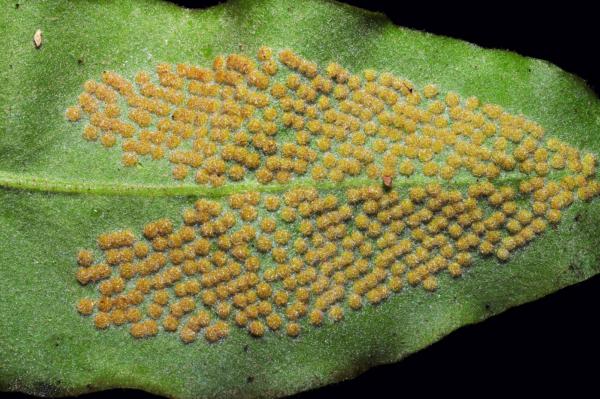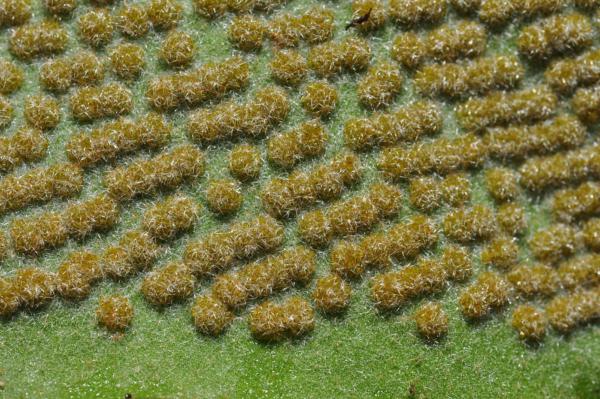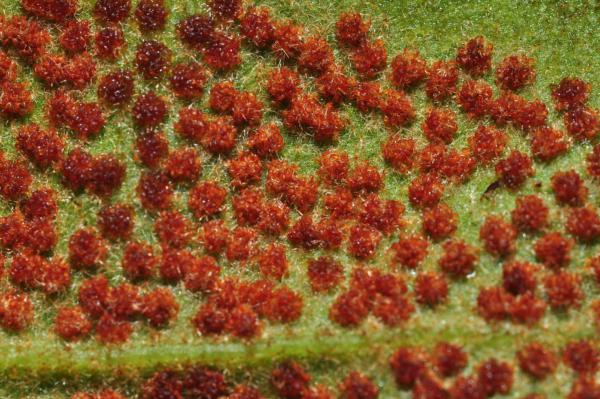
Pyrrosia penangiana (Hook.) Holttum
Family
Polypodiaceae
Nomenclature
Pyrrosia penangiana (Hook.) Holttum, Rev. Fl. Malaya ed. 1, 2: 146, f. 62. 1955 [‘1954’]; Tagawa & K.Iwats., Acta Phytotax. Geobot. 23: 52. 1968; Hovenkamp, Leiden Bot. Ser. 9: 218, f. 18. 1986; Tagawa & K.Iwats., Fl. Thailand 3: 503. 1989; Hovenkamp, Fl. Males., Ser. II, Ferns and Fern Allies 3: 166. 1998; Boonkerd & Pollawatn, Pterid. Thailand: 288. 2000. – Niphobolus penangianus Hook., Icon. Pl, t. 203. 1840; Bedd., Handb. Ferns Brit. India: 332, f. 182. 1883. – Cyclophorus penangianus (Hook.) C.Chr., Index Filic.: 200. 1905; Bonap., Notes Ptérid. 14: 66. 1923. – Type: Dalhousie s.n. (E, K), Peninsular Malaysia, Penang.
Pyrrosia mollis (Kunze) Ching, Bull. Chin. Bot. Soc. 1: 53. 1935. – Niphobolus mollis Kunze, Bot. Zeit. 6: 121. 1848.
Description
Rhizome short, 3–6 mm diam., bearing stipes closely on short phyllopodia, scaly; scales attached at base, linear-lanceolate, gradually narrowing from base towards tailed apex, 2.6–9.4 by 0.5–1.3 mm, entire, brown to pale brown, concolorous, entire and hairless at margin. Fronds simple. Stipes very short, not distinct from rachis with decurrent laminae on both sides, densely stellate hairy. Laminae spathulate, broadest at apical portion, narrowing towards base and then broadly decurrent as wings of stipes, 11–72 x 1–8 cm; rachis raised on both surfaces, main lateral veins more or less visible, the smaller veins obscure, copiously reticulate; thick but rather soft, the upper surface glabrescent, the lower surface densely covered with stellate hairs. Sori on the apical portion of fronds on the lower surface except marginal areas, one to each areole, in distinct oblique bands.
Distribution in Thailand
SOUTH-WESTERN: Prachuap Khiri Khan; PENINSULAR: Phangnga, Satun, Yala.
Wider Distribution
W Malaysia, Sumatra and Java; also recorded from Burma (Tenasserim).
Ecology
Collected on rocks (often limestone) at low altitudes.
Proposed IUCN Conservation Assessment
Least Concern (LC). This species is widespread and not under any known threat.
Habit
Whole plant from above
Upper frond surface
Lower frond surface with sori
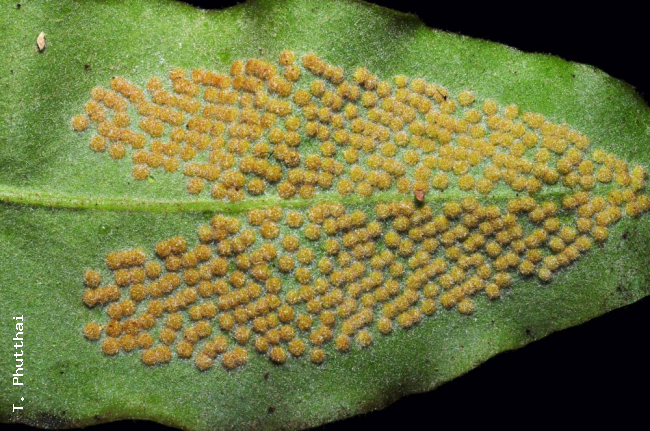
Sori
Young sori
More mature sori
Site hosted by the Royal Botanic Garden Edinburgh. Content managed by Stuart Lindsay, Gardens by the Bay, Singapore and David Middleton, Singapore Botanic Gardens. Last updated 24 January 2012
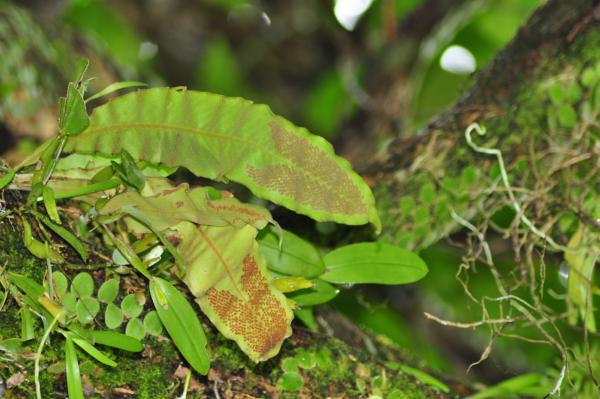
_DJM_0837_sml.JPG)
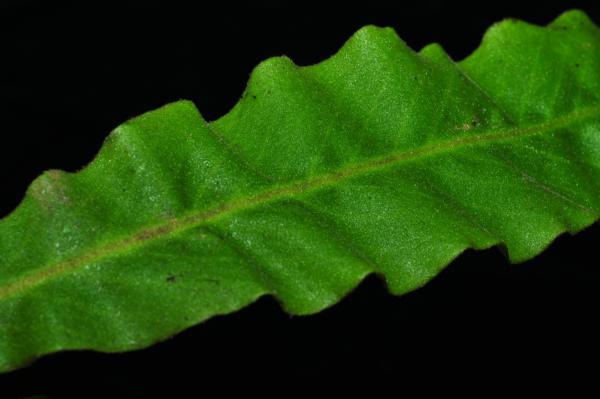
_DJM_0834_sml.JPG)
